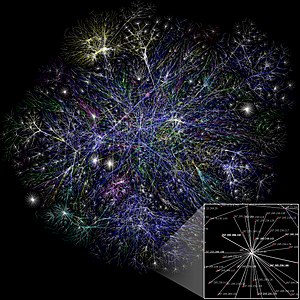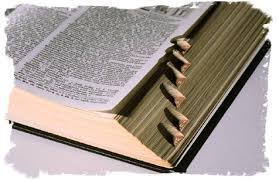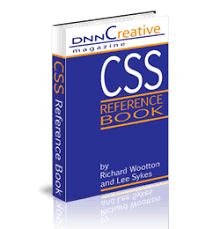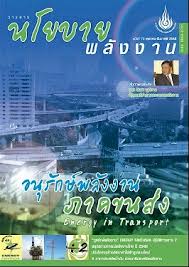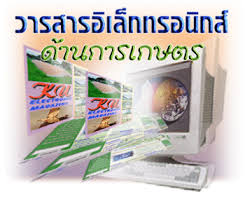Sub-Topic
Introduction
The Evaluate of the internet
From One Network to Many: The role of DARPA
The Internet Architecture
The Domain Name System
The Internet Standards Process
Managing the Internet
Conclusion
INTRODUCTION
As we approach a new millennium, the Internet is revolutionizing our society, our economy and our technological systems. No one knows for certain how far, or in what direction, the Internet will evolve. But no one should underestimate its importance.
Over the past century and a half, important technological developments have created a global environment that is drawing the people of the world closer and closer together. During the industrial revolution, we learned to put motors to work to magnify human and animal muscle power. In the new Information Age, we are learning to magnify brainpower by putting the power of computation wherever we need it, and to provide information services on a global basis. Computer resources are infinitely flexible tools; networked together, they allow us to generate, exchange, share and manipulate information in an uncountable number of ways. The Internet, as an integrating force, has melded the technology of communications and computing to provide instant connectivity and global information services to all its users at very low cost.
http://www.cnri.reston.va.us/what_is_internet.html
library, a collection of books or other written or printed materials, as well as the facility in which they are housed and the institution that is responsible for their maintenance. Modern libraries may contain a wide range of materials, including manuscripts and pamphlets, posters, photographs, motion pictures, and videotapes, sound recordings, and computer databases in various form.
http://www.answers.com/topic/library
The Internet is a global system of interconnected computer networks that use the standardized Internet Protocol Suite (TCP/IP) to serve billions of users worldwide. It is a network of networks that consists of millions of private and public, academic, business, and government networks of local to global scope that are linked by copper wires, fiber-optic cables, wireless connections, and other technologies. The Internet carries a vast array of information resources and services, most notably the inter-linked hypertext documents of the World Wide Web (WWW) and the infrastructure to support electronic mail. In addition it supports popular services such as online chat, file transfer and file sharing, gaming, commerce, social networking, publishing, video on demand, and teleconferencing and telecommunications. Voice over Internet Protocol (VoIP) applications allow person-to-person communication via voice and video.http://en.wikipedia.org/wiki/Internet
BODY
The Evolution of the internet
The evolution of the Internet was based on two technologies and a research dream. The technologies were packet switching and computer technology, which, in turn, drew upon the underlying technologies of digital communications and semiconductors. The research dream was to share information and computational resources. But that is simply the technical side of the story. Equally important in many ways were the other dimensions that enabled the Internet to come into existence and flourish. This aspect of the story starts with cooperation and far-sightedness in the U.S. Government, which is often derided for lack of foresight but is a real hero in this story.
It leads on to the enthusiasm of private sector interests to build upon the government funded developments to expand the Internet and make it available to the general public. Perhaps most important, it is fueled by the development of the personal computer industry and significant changes in the telecommunications industry in the 1980s, not the least of which was the decision to open the long distance market to competition. The role of workstations, the Unix operating system and local area networking (especially the Ethernet) are themes contributing to the spread of Internet technology in the 1980s into the research and academic community from which the Internet industry eventually emerged.
Many individuals have been involved in the development and evolution of the Internet covering a span of almost four decades if one goes back to the early writings on the subject of computer networking by Kleinrock [i], Licklider [ii], Baran [iii], Roberts [iv], and Davies [v]. The ARPANET, described below, was the first wide-area computer network. The NSFNET, which followed more than a decade later under the leadership of Erich Bloch, Gordon Bell, Bill Wulf and Steve Wolff, brought computer networking into the mainstream of the research and education communities. It is not our intent here to attempt to attribute credit to all those whose contributions were central to this story, although we mention a few of the key players. A readable summary on the history of the Internet, written by many of the key players, may be found at www.isoc.org/internet/history. [vi]
From One Network to Many: The role of DARPA
Modern computer networking technologies emerged in the early 1970s. In 1969, The U.S. Defense Advanced Research Projects Agency (variously called ARPA and DARPA), an agency within the Department of Defense, commissioned a wide-area computer network called the ARPANET. This network made use of the new packet switching concepts for interconnecting computers and initially linked computers at universities and other research institutions in the United States and in selected NATO countries. At that time, the ARPANET was essentially the only realistic wide-area computer network in existence, with a base of several dozen organizations, perhaps twice that number of computers and numerous researchers at those sites. The program was led at DARPA by Larry Roberts. The packet switches were built by Bolt Beranek and Newman (BBN), a DARPA contractor. Others directly involved in the ARPANET activity included the authors, Len Kleinrock, Frank Heart, Howard Frank, Steve Crocker, Jon Postel and many many others in the ARPA research community.
The Internet Architecture
In order to work properly, the architecture required a global addressing mechanism (or Internet address) to enable computers on any network to reference and communicate with computers on any other network in the federation. Internet addresses fill essentially the same role as telephone numbers do in telephone networks.
A key architectural construct was the introduction of gateways (now called routers) between the networks to handle the disparities such as different data rates, packet sizes, error conditions, and interface specifications. The gateways would also check the destination Internet addresses of each packet to determine the gateway to which it should be forwarded. These functions would be combined with certain end-end functions to produce the reliable communication from source to destination.
DARPA contracted with Cerf's group at Stanford to carry out the initial detailed design of the TCP software and, shortly thereafter, with BBN and University College London to build independent implementations of the TCP protocol (as it was then called – it was later split into TCP and IP) for different machines.
The TCP/IP protocol suite was developed and refined over a period of four more years and, in 1980, it was adopted as a standard by the U.S. Department of Defense. On January 1, 1983 the ARPANET converted to TCP/IP as its standard host protocol. Gateways (or routers) were used to pass packets to and from host computers on “local area networks.” Refinement and extension of these protocols and many others associated with them continues to this day by way of the Internet Engineering Task Force [viii].
The Domain Name System
As the Internet grew, it became harder and harder for the NIC to keep the list current. Anticipating that this problem would only get worse as the network expanded, researchers at USC Information Sciences Institute launched an effort to design a more distributed way of providing this same information. The end result was the Domain Name System (DNS) [xvi] which allowed hundreds of thousands of "name servers" to maintain small portions of a global database of information associating IP addresses with the names of computers on the Internet.
The naming structure was hierarchical in character. For example, all host computers associated with educational institutions would have names like "stanford.edu" or "ucla.edu". Specific hosts would have names like "cs.ucla.edu" to refer to a computer in the computer science department of UCLA, for example. A special set of computers called "root servers" maintained information about the names and addresses of other servers that contained more detailed name/address associations. The designers of the DNS also developed seven generic "top level" domains, as follows:
Education - EDU
Government - GOV
Military - MIL
International - INT
Network - NET
(non-profit) Organization - ORG
Commercial - COM
Under this system, for example, the host name "UCLA" became "UCLA.EDU" because it was operated by an educational institution, while the host computer for "BBN" became "BBN.COM" because it was a commercial organization. Top-level domain names also were created for every country: United Kingdom names would end in “.UK,” while the ending “.FR” was created for the names of France.
The Domain Name System (DNS) was and continues to be a major element of the Internet architecture, which contributes to its scalability. It also contributes to controversy over trademarks and general rules for the creation and use of domain names, creation of new top-level domains and the like. At the same time, other resolution schemes exist as well.
The growth of Web servers and users of the Web has been remarkable, but some people are confused about the relationship between the World Wide Web and the Internet. The Internet is the global information system that includes communication capabilities and many high level applications. The Web is one such application. The existing connectivity of the Internet made it possible for users and servers all over the world to participate in this activity. Electronic mail is another important application. As of today, over 60 million computers take part in the Internet and about 3.6 million web sites were estimated to be accessible on the net. Virtually every user of the net has access to electronic mail and web browsing capability. Email remains a critically important application for most users of the Internet, and these two functions largely dominate the use of the Internet for most users.
The Internet Standards Process
investigators on the internetting research effort essentially determined what technical features of the TCP/IP protocols would become common. The initial work in this area started with the joint effort of the two authors, continued Internet standards were once the output of research activity sponsored by DARPA. The principal in Cerf's group at Stanford, and soon thereafter was joined by engineers and scientists at BBN and University College London. This informal arrangement has changed with time and details can be found elsewhere [xviii]. At present, the standards efforts for Internet is carried out primarily under the auspices of the Internet Society (ISOC). The Internet Engineering Task Force (IETF) operates under the leadership of its Internet Engineering Steering Group (IESG), which is populated by appointees approved by the Internet Architecture Board (IAB) which is, itself, now part of the Internet Society.
Managing the Internet
The management of the Domain Name System offers a kind of microcosm of issues now frequently associated with overall management of the Internet's operation and evolution. Someone had to take responsibility for overseeing the system's general operation. In particular, top-level domain names had to be selected, along with persons or organizations to manage each of them. Rules for the allocation of Internet addresses had to be established. DARPA had previously asked the late Jon Postel of the USC Information Sciences Institute to take on numerous functions related to administration of names, addresses and protocol related matters. With time, Postel assumed further responsibilities in this general area on his own, and DARPA, which was supporting the effort, gave its tacit approval. This activity was generally referred to as the Internet Assigned Numbers Authority (IANA) [xix]. In time, Postel became the arbitrator of all controversial matters concerning names and addresses until his untimely death in October 1998.
It is helpful to consider separately the problem of managing the domain name space and the Internet address space. These two vital elements of the Internet architecture have rather different characteristics that color the management problems they generate. Domain names have semantics that numbers may not imply; and thus a means of determining who can use what names is needed. As a result, speculators on Internet names often claim large numbers of them without intent to use them other than to resell them later. Alternate resolution mechanisms [xx], if widely adopted, could significantly change the landscape here.
The success of the Internet in society as a whole will depend less on technology than on the larger economic and social concerns that are at the heart of every major advance. The Internet is no exception, except that its potential and reach are perhaps as broad as any that have come before.
CONCLUSION
The Internet as a widespread end-user tool is a relatively new phenomenon in the history of libraries, yet in its short existence, it has had a significant impact on every facet of library operations. The areas affected range from internal administration and management functions, such as staffing and staff training, workflow, and collection management, to technical functions such as systems software and hardware, to the more publicly visible services offered by libraries such as access to computers and the Internet and training in the use of these, digital reference and other information services, community-oriented services and resources, as well as a variety of public relations issues related to these. A fundamental issue underlying all these is the impact that the Internet is having upon public library use. The development of the Internet as a tool has been so rapid that it is safe to say that libraries have (understandably) been caught by surprise, and the initial planning and response to the Internet's functionality within the library was, in many cases, more reactive than proactive. This rapid development also meant that libraries did not have access to empirical research that could guide them in some of their decisions; fortunately, enough time has elapsed so that some research results are now available on various aspects of Internet use in relation to the public library.
This article will review what is currently known about the relationship between the Internet and public library use, looking first briefly at the state of Internet connectivity in libraries, and then summarizing how the Internet is affecting public library use in areas such as access, digital reference, circulation, and services offered. The article concludes with a more in-depth discussion of user decision criteria in relation to choices of whether to use Internet or library resources. Issues such as managing and supporting Internet services, the Digital Divide, and filtering are out of scope for this overview. While Internet connectivity has facilitated services such as E-mail for libraries for several decades, the Internet as referred to in this overview assumes graphical Web browsing capabilities such as became more widely available with the emergence of the World Wide Web in the mid-1990s.
Note that with the advent of the Internet, definitions of “use” of the library must expand beyond traditional measures such as circulation counts, counting patron walk-ins, numbers of library cards issued, or number of reference questions answered. Delineating measures of use in an on-line environment is complex; if a patron finds the answer to a question using a search engine on a library computer, or a link on a library Web page, how is this use to be most accurately measured and classified? Privacy issues also impact the ability to measure use, and other factors such as satisfaction are difficult to assess in the on-line environment. While there is a large amount of anecdotal evidence to suggest that librarians are busier than ever before, assisting patrons with computer access questions and providing training in navigating the Internet, on an empirical level, libraries and LIS researchers are currently grappling with what tools to use and how to measure use in this environment, and how to interpret the kinds of statistical data that can be gathered.
for more information
REFERENCES
http://en.wikipedia.org/wiki/Internet
http://www.cnri.reston.va.us/what_is_internet.html
http://www.informaworld.com/smpp/content~content=a713532113~db=all~order=date
http://www.answers.com/topic/library

